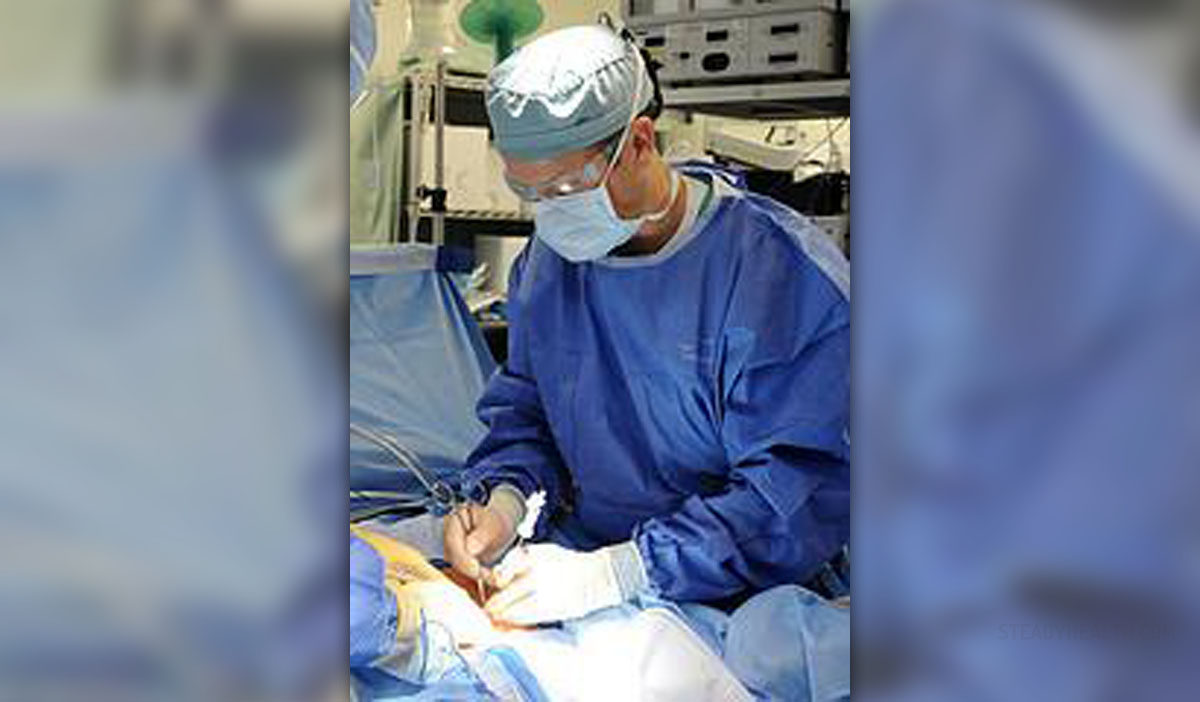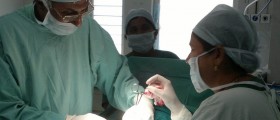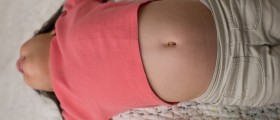
Normally, the term hernia refers to a condition characterized by an organ pushing through a weak area in the muscles and tissues. This way the organs that are supposed to stay inside specific body compartments, protrude into the nearby compartments or under the skin.
When we discuss abdominal hernia we generally think about a condition when there is a tear in the inner lining of the abdominal wall i.e. the muscle and fat tissue or the tissue extending from the ribs down to the top of the thighs. This tear allows organs of the abdomen to bulge into the nearby compartments which is a source of various potential complications.
Problem with Abdominal Hernia
Abdominal hernias i.e. the protrusion of the abdominal organs can be either reducible or non reducible. Reducible hernias are organ protrusions which with slight pressure return to their original position while non reducible hernias cannot be pushed back into the abdominal cavity and the protrusion they cause cannot be anyhow flatten.
Even though a hernia may affect each and every person, there are groups of people more prone to the condition. First of all, hernias are reported more in obese individuals and pregnant women. Furthermore, if one coughs for a long period of time, the muscles of the abdomen may become weak and allow organ protrusion. Similarly any strain such as the one associated with bowel movements or urinating, straining connected with lifting heavy objects etc., especially if it is repeated and exaggerated may eventually result in a hernia.
There are several types of abdominal hernia including inguinal hernia, epigastric hernia, umbilical hernia, femoral hernia and incisional hernia.
Inguinal hernia develops once some organs from the abdominal cavity, most commonly the small intestine, protrude through the inguinal canal. Inguinal hernias are more typical for men. Indirect inguinal hernia is reported in the majority of cases and is either a result of inherited weakness at the internal ring or is acquired later mostly due to overstrenuous activities. Direct inguinal hernia, on the other hand, is associated with the process of aging or some injuries.
Epigastric hernia develops above the belly button as a consequence of weak muscles in the upper-middle abdomen. Epigastric hernia also affects men more than women. It is estimated that most cases occur between 20 and 50 years of age.
Umbilical hernia, as the name suggests, develops in the umbilicus (the navel). This type of abdominal hernia is common in babies although it affects children and adults as well.
Femoral hernia is a protrusion localized between the abdomen and the thigh. The hernia is localized on the upper portion of the thigh and seems to affect women more than men.
And finally, we have incisional hernia. This is a protrusion that develops at the site of previous surgery where the muscles have been cut which resulted in their weakening.
Surgery for Abdominal Hernia
Surgery is the only way to correct the tear and weakening that allow bulging of the abdominal organs. It should be timely performed and prevent all the potential complications of hernia. The most common complication is bowel obstruction. Incarceration and strangulation of hernia may also occur. Bowel obstruction associated with abdominal hernias generally develops after incarceration and strangulation.
Surgeons opt for laparoscopic approach and repair the hernia, stop its progression and prevent potential complications.
The very surgery requires a fiber optic viewing tube and special instruments all of which are inserted through small incisions in the abdominal wall. This way the abdomen does not get fully exposed and complications are less severe compared to traditional open surgery. Recovery is also quicker allowing patients to get back to their normal lives within short period of time.
Basically, there are three tiny little scars in the abdomen. One of these is inside the belly button and two others on each side of the tummy a bit above the waistline. After incisions are made the surgeon moves the content of the hernia back into the abdominal cavity and takes care of strangulation (if it is present). In the end the surgeon inserts a synthetic mesh at the spot of the protrusion. The mesh prevents recurrence of protrusion and keeps the organ inside the abdominal cavity.
All patients undergo preoperative tests. Some medications taken of a regular basis such as Aspirin might be discontinued prior to the surgery because of potential complications. Also, allergies of any kind must be reported. This way adverse effects of anesthesia and postoperative medicamentous treatment are prevented.
Hospitalization might last up to a few days. Recovery continues at home and depends on the general health of the patient and several more factors. Even though most patients may be able to walk 24 hours after the surgery, swelling, pain and bruising will linger for a while. Light activities are allowed a few days after the procedure while all strenuous activities should be strictly avoided for at least 6-8 weeks. Lifting heavy objects is forbidden even when the person completely recovers. Fever, difficulty urinating, excessive bleeding, infection at the incision site etc. are potential complications that require timely treatment.

















Your thoughts on this
Loading...